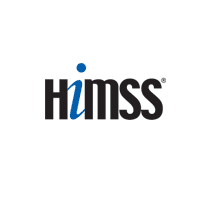US hospitals making progress on EMRs
- 5 March 2013

US hospital IT leaders report strong progress towards electronic medical records, with two thirds saying they have achieved the first milestone in the Federal ‘meaningful use’ programme.
A further three quarters say they anticipate meeting the next – stage 2 – meaningful use milestone that falls in September 2014. The findings came as part of the annual HIMSS leadership survey.
But the continued momentum on EMR, fuelled by President Barak Obama’s American Recovery and Investment Act of 2009, which triggered $30 billion of incentives for using electronic records to improve and demonstrate quality of care, is creating intense competition for skilled and experience health IT professionals.
IT staffing was the top barrier to implementation identified by the survey for the second year in a row, with 21% of respondents concerned that they won’t be able to secure the staffing they need for IT implementations.
Key skill areas under pressure include clinical application support and network and architecture support
Jennifer Horowitz, director of research, HIMSS Analytics, told eHealth Insider that she expected staff shortages to remain a pressing issue as EMR adoption continues to gather pace.
“Last year we saw it as the top reported barrier and this year it’s the same again; it’s a reflection of the high demand for experienced people able to implement an EHR.”
Dr Melisa Rizer, chief medical information officer at Wexner Medical Centre, Ohio, told EHI that her organisation was able to recruit, but that in one year she’d lost 25% of her IT staff when they joined a consulting firm.
“It’s difficult to compete against vendors and consultancies who can offer higher pay for people with in-demand skills.”
Respondents to the survey, targeted at senior US healthcare executives from hospital organisations, reported that healthcare reform is the top barrier in their organisation, together with and shifting payment models and an extremely complex health policy agenda.
Other top reported barriers include lack of financial support and the inability of vendors to deliver products.
Asked about clinical IT priorities, 19% of survey respondents said they want to focus on getting an EMR in place.
Other priorities include a focus on computerised physician order entry, clinical documentation, and linking clinical systems to quality measures.
Horowitz said, “The survey found that healthcare organisations are making strong progress against federal mandates on meaningful use.”
Steve Lieber, chief executive of HIMSS, said at a Monday press briefing in New Orleans, where the organisation is holding its huge annual conference, HIMSS 2013: “The incentive programme has done exactly what was intended – spur investment in areas that it wasn’t being made.
“This is a policy decision much more than it’s a financial decision. People say that adoption is low among physician practices, but you’ve got to be remember where we came from.”
Horowitz said that over the next two years meeting meaningful use milestones remained the top priority, but getting value out of existing systems was getting more attention, too.
“Organisations also want to make sure that the systems they have in place [are optimised] to their full functionality.
“Quality outcomes is one of their primary areas of focus, reducing medical errors and standardising clinical care.”
On security the top reported area of concern was securing mobile devices, identified as a priority by over a third of respondents, a massive jump from previous surveys.




